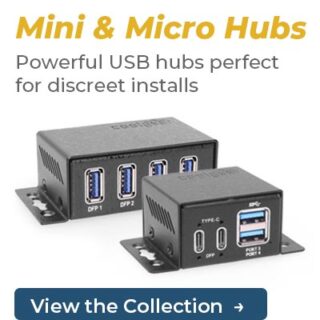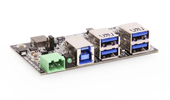Wearable health-related devices have grown spectacularly in their market size and range of uses. They vary from simple activity monitors like the FitBit to specialized wearables for monitoring conditions and delivering treatments. Most use wireless or USB connections or both.
The advantage of having both wireless and USB interfaces is flexibility. Someone measuring distance covered while jogging obviously doesn’t want to be tethered by a cable, so communication is usually wireless, most often Bluetooth. However, the devices need to be charged or else have their batteries replaced periodically, and most people find rechargeable devices far more convenient. Even long-life batteries seem to run out at the least convenient time. USB is the most widely supported way to plug into a charger.
The better devices support firmware updates when bugs or security issues are found. Installing updates over USB is faster and more reliable than sending the new code over Bluetooth.
The Continua Health Alliance has defined standards for medical devices that use USB. Devices which aren’t strictly medical vary more. Non-invasive devices that collect health data for personal use generally aren’t subject to medical regulations. Regardless of their regulatory status, any device that people rely on to stay healthy should use high-quality components, cables, and hubs.
Fitness bands
Available under many brand names, fitness bands track physical activity while monitoring heart rate and blood pressure. About 68.2 million of them were delivered in 2019. Many of them recharge with a USB connection.
The COVID-19 pandemic has increased interest in them. People now prefer to minimize their visits to medical offices, and drugstores have shut down their in-store medical equipment. Tracking their vital signs themselves is a safer and more convenient alternative, even if it doesn’t quite give the confidence of seeing a medical professional. The devices let people measure their levels of exercise and motivate them to exercise more.
Getting frequent readings is important for many. A recent innovation is blood oxygen monitoring, which can help with early diagnosis of COVID-19.
USB Medical Alert Bracelets
The medical alert bracelet, with information about health conditions and contacts, has been a standby for many years. The new, high-tech version supplements it with detailed information available by plugging it into a USB port. Basic engraved information is still available for quick reading, but the internal storage can say as much as necessary about allergies, conditions, required medications, and so on.
The bracelets aren’t expensive, and the information they hold could be life-saving. The devices can take other forms, such as pendants, to suit the wearer’s taste.
Devices for clinical purposes
Beyond consumer and informational devices, the use of wearable devices for serious medical purposes is growing. They figure into the treatment of diabetes, Parkinson’s disease, and ADHD. Others provide professional-level heart rate, blood pressure, glucose, and temperature monitoring.
Good-quality equipment is essential for these uses. Connections need to be reliable so that the device life isn’t decreased and it can be charged in a known amount of time. A good cable or hub doesn’t cost much compared with an FDA-approved device.
The importance of quality
When wearable health devices are 24-hour necessities, their owners don’t want to lose more time than necessary to charging them. USB Type-C connectors with power delivery support allow the fastest charging, and a growing number of devices provide that support.
Healthcare professionals should understand why choosing the best cables, chargers, and hubs is important. They need to apply that knowledge to the equipment for their offices, as well as explaining to patients the need to stay away from cheap, unreliable components.
Looking for the best in USB support for medical equipment? We can help. Call or write today.




















